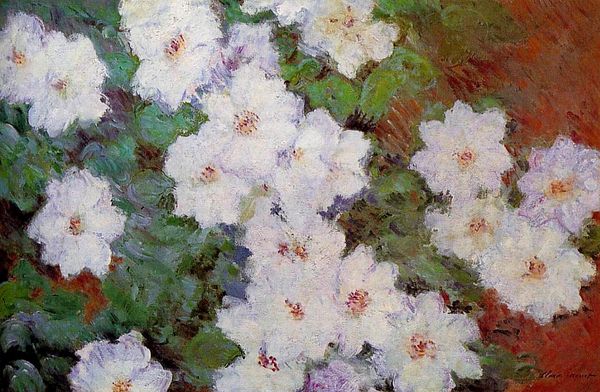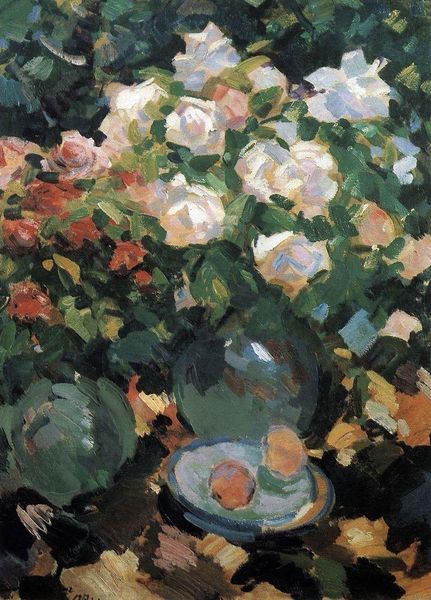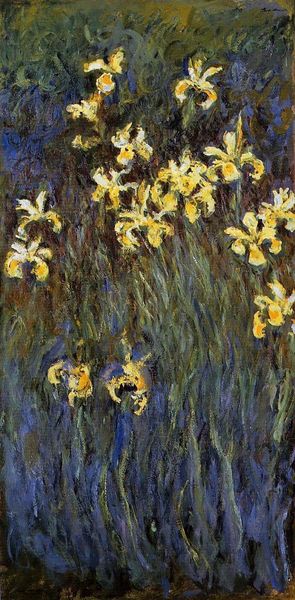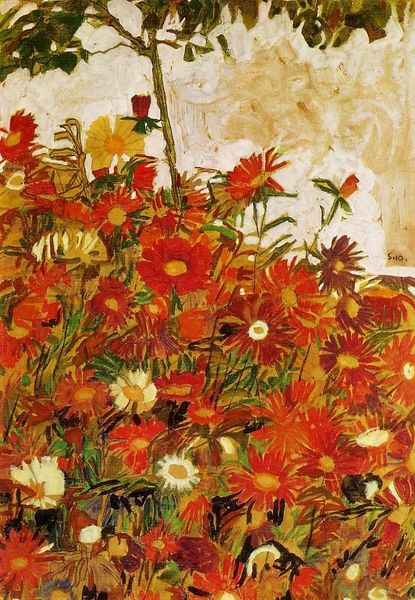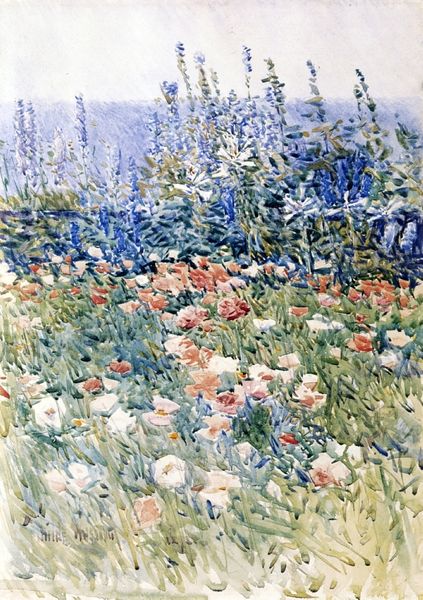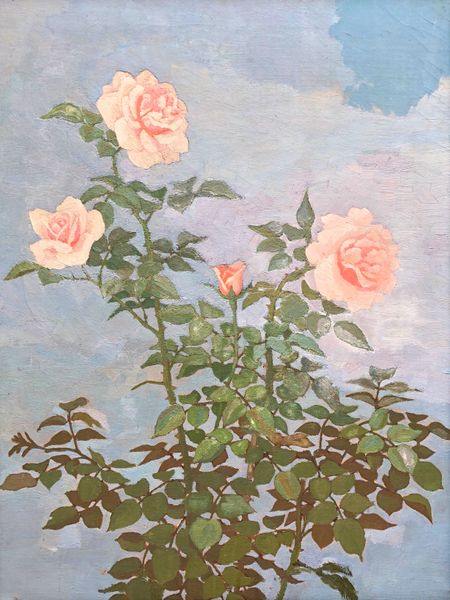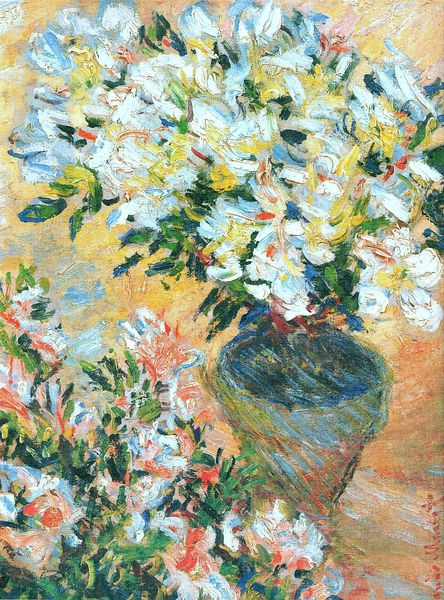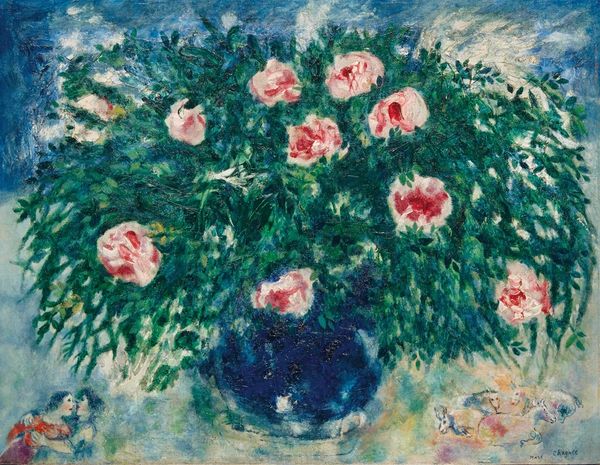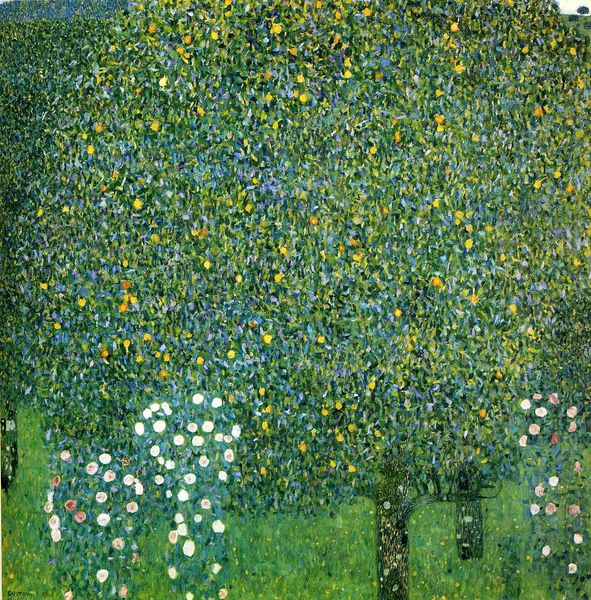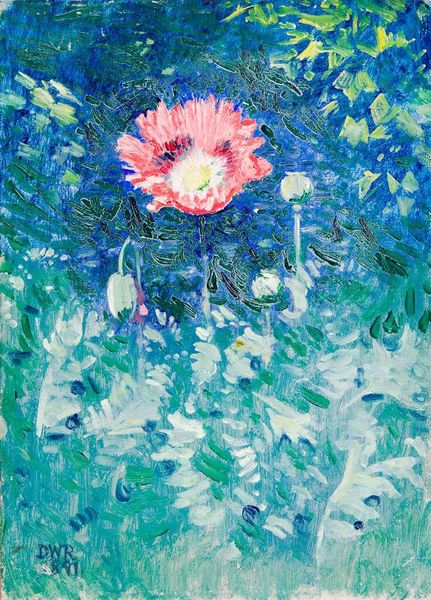
painting, plein-air, oil-paint
#
painting
#
impressionism
#
plein-air
#
oil-paint
#
landscape
#
flower
#
impressionist landscape
#
plant
#
naive art
#
botany
#
post-impressionism
Dimensions: 24.5 x 33 cm
Copyright: Public domain
Art Historian: Welcome. Here we see Van Gogh’s “Wild Roses,” rendered in oil paint in 1890. It currently resides in the collection of the Van Gogh Museum in Amsterdam. Art Historian: It feels so optimistic, doesn’t it? All that green—lush, even—and those bright white roses like little suns. It projects health. Art Historian: The painting was produced during his stay at the Saint-Paul-de-Mausole asylum. It is thought that it captures the scenery he saw daily from the institution grounds, reflecting his exploration of the local landscape through the *plein air* method. Art Historian: Roses, of course, have layers of symbolic weight. On one level, beauty and love but within Van Gogh’s world, this image might capture themes of fragility and the ephemeral nature of existence, given the broader cultural associations around roses relating to beauty’s quick passage and decline. Art Historian: Interesting reading, but his works from this time—particularly the landscapes—can be seen as exercises in observational discipline. They show his commitment to art as a form of therapy. It was a world he could try to master even if just on canvas, against the institutional settings controlling other parts of his life. Art Historian: The tension of those ideas is vivid for me here; a controlled and measured approach, almost scientific, versus that inherent melancholy when one considers roses in the history of symbolism and the symbolism that attaches to them. Also, notice the yellow, and Van Gogh's common, very strategic use of yellow; for some, it may connote happiness but for Van Gogh, yellow was probably about communicating feverish emotional states as a recurring visual motif. Art Historian: Indeed, though it should also be noted his broader use of color—those deep greens and vibrant yellows—reflect an embrace of Post-Impressionism. Note that it does also align with trends among avant-garde circles experimenting with expressive potential in landscapes at that time. The point is there was nothing inevitable or intuitive here! Art Historian: Art rarely emerges from a vacuum! Thank you, I am struck by how something seemingly so simple offers up so much nuance when you start unpacking the various threads of influence and the artist’s potential frame of mind. Art Historian: Indeed, examining art’s place in its era and art history shows us its intricate web of influences.
Comments
No comments
Be the first to comment and join the conversation on the ultimate creative platform.



